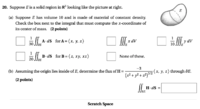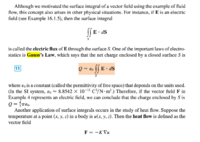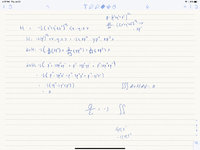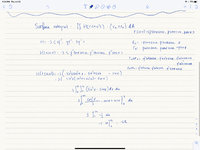tomoyoshki
New member
- Joined
- Jul 22, 2020
- Messages
- 3
Hello so I am stuck at b of this question and hope someone could help
Question B is where I have some trouble
I know that to compute the flux we could use divergence theorem which is simply taking the derivative of vector F. However divF is a really complicated function and I couldn't figure out how to compute it. If it came out to be a constant it would be nice since I could just use that constant times the volume which is 10, but doing div of vector F doesn't seem like the way to go and it is also what the key says. The answer turned out to be -12pi.
So please if anyone could help me out here, I really appreciate it.
Thanks

Question B is where I have some trouble
I know that to compute the flux we could use divergence theorem which is simply taking the derivative of vector F. However divF is a really complicated function and I couldn't figure out how to compute it. If it came out to be a constant it would be nice since I could just use that constant times the volume which is 10, but doing div of vector F doesn't seem like the way to go and it is also what the key says. The answer turned out to be -12pi.
So please if anyone could help me out here, I really appreciate it.
Thanks






